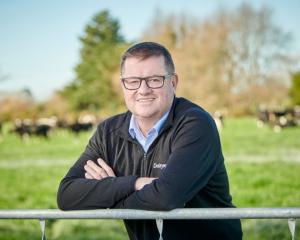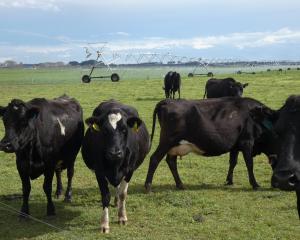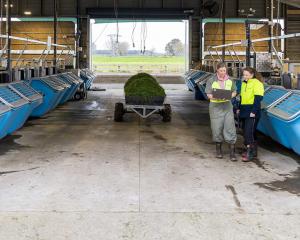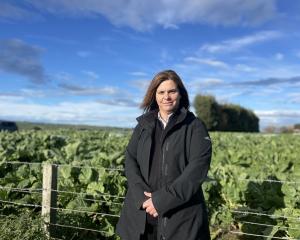
Their cows no longer calve out in paddocks in all weather and their staff no longer have to pick them up day or night.
Originally from a sheep and beef background in the North Island, the couple and their children: Bridgit (20), Rachael (18) and Luke (14), moved south about 10 years ago.
They had owned their dairy farm since 1993 and had a sharemilker on the property for 15 years, but then bought their own herd for their flat 179ha and 242ha effective milking platforms at Lochiel. Mr Alexander no longer grows crop, preferring to winter stock on grass and baleage, although 400 cows are in a wintering barn.
''I realised we were going to have to be clever, and be more self-contained,'' he said.
''I used to feed then 14kgDM/day/cow on crop but now they only need 12kgDM/day/cow.
''As I am not growing crop, there is no risk of crop failure.
''There is no need to transition animals from grass to fodder beet.
''This way there are less crops growing so fewer emissions from a carbon point of view.
''We have fine-tuned the system for the past seven or eight years, and developed a system that works for us.''
The new system also makes winter easier for his five staff.
Last season he used his new feed pad for the first time, which made wintering for cows and staff significantly easier.
There is a large concrete feeding pad big enough to accommodate about 120 cows, as well as a silage pad, plus another pad for standing and calving next door.
The whole complex was built beside the milking sheds and there is a shelter belt along the other side.
The calving pad is half a metre deep with gravel which provides sufficient drainage underneath to cope with the effluent from about 120 cows at a time as well as the large rain catchment, and the whole things drains into a seven million litre effluent pond.
''The gravel is washed once a year.''
He said between 100 and 120 cows moved on to the pad from the paddocks as soon as they looked ready to calve.
''We currently have 30 to 40 calves a day born here.''
He said the cows moved back and forth to the feed pad to eat silage and the system made it easy for staff to pick up the calves and move the mothers to the milking herd.
The cows were all DNA'd and so were the calves to ensure the correct lineage was identified.
He said the pad cost about $800,000, including $120,000 for the effluent pond, $90,000 for the weeping wall, $280,000 for the feed pad, $90,000 for the calving pad, $90,000 for the silage pad and $100,000 for the resource consent and consultants etc.
However, while the feed and calving pad is a more efficient wintering tool, it means he has to work through some consent issues with Environment Southland. He said Environment Southland's rules, or their prescriptive recipes for compliance and consents, were more input rather than output driven and did not allow for more flexibility for the innovative farmer, which he said was frustrating.
''No-one recipe fits all farmers.''













